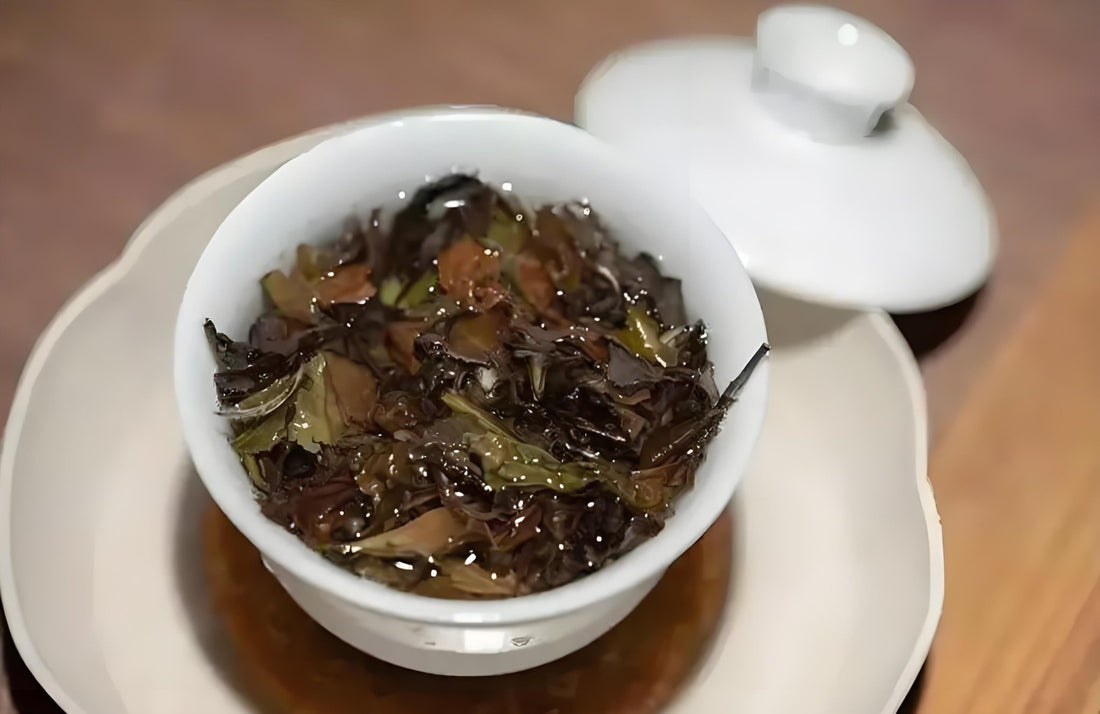
White Peony Tea (Bai Mudan): Terroir, Craft & Health Science of White Tea
Key Takeaways:
- Bai Mudan (White Peony), developed in 1922, balances the luxury of Baihao Silver Needle and the accessibility of Shou Mei, with a "one bud with one or two leaves" picking standard.
- Primarily grown in Fuding and Zhenghe (Fujian), it also has a presence in Yunnan where large-leaf varieties thrive, adding diversity to its profiles.
- Graded into four levels (Supreme/Peony King, First, Second, Third), it blends the fresh downy aroma of Silver Needle and rich floral/date scents of Shou Mei.
- Boasting 8.5% EGCG (higher than green tea), it offers notable antioxidant benefits.
- Optimal brewing: 90°C water, 5g tea per 150ml, using a gaiwan or teapot (per white tea brewing guidelines).
Bai Mudan: A Versatile Star in White Tea Family
Bai Mudan (White Peony) has carved a unique niche in Chinese white teas since its creation in 1922. Designed to bridge the gap between the premium Baihao Silver Needle and the everyday Shou Mei, it embodies a harmonious blend of refinement and approachability, making it a versatile choice for tea lovers.
Origin & Growing Regions
Born from the ingenuity of Fuding tea masters in the 1920s, Bai Mudan was crafted to balance the exclusivity of Silver Needle (reserved for elites) and the accessibility of Shou Mei (a daily staple). While it’s most famously associated with Fujian’s Fuding and Zhenghe regions—where coastal Fuding yields floral notes and inland Zhenghe offers honeyed nuances—it also thrives beyond Fujian: Yunnan province, known for its large-leaf tea varieties, produces a distinct Bai Mudan with its own unique character, adding to the tea’s diversity.
Picking Standard & Grades
Bai Mudan’s defining feature lies in its picking: "one bud with one or two leaves"—a middle ground between Silver Needle (single buds) and Shou Mei (one bud with three to four mature leaves). This selection captures both the tenderness of young buds and the depth of slightly mature leaves.
It’s categorized into four grades: Supreme (dubbed "Peony King," the highest tier), First, Second, and Third, with Peony King standing out for its uniform, high-quality buds and leaves.
Sensory Profile
- Appearance: Dry leaves showcase silvery buds intertwined with jade-green leaves, dotted with fine white "hao" (fuzz). When brewed, the leaves unfurl to resemble peony buds in bloom—hence its name "White Peony."
- Aroma: A harmonious mix of Silver Needle’s fresh downy scent and Shou Mei’s rich floral and date-like aromas.
- Taste: It balances the crisp freshness of Silver Needle with the mellow depth of Shou Mei, leaving a clean, lingering sweetness.
Aging Potential & Health Benefits
Like many white teas, Bai Mudan evolves with time: young teas (1-2 years) shine with fresh, vibrant notes, while aged versions (5+ years) develop layers of dried fruit and warm nuances. Biologically, it’s rich in EGCG (8.5% content, higher than green tea, per Journal of Agricultural and Food Chemistry), offering robust antioxidant support.
Brewing Tips
Following white tea brewing principles, Bai Mudan fares best with:
- Water temperature: 90°C (194°F) to preserve its delicate flavors.
- Ratio: 5g tea per 150ml water, using a gaiwan or teapot for optimal extraction.
Bai Mudan’s charm lies in its balance—not in outshining other white teas, but in complementing them. Whether from Fujian or Yunnan, young or aged, it stands as a testament to the diversity of white tea, inviting exploration for every palate.
